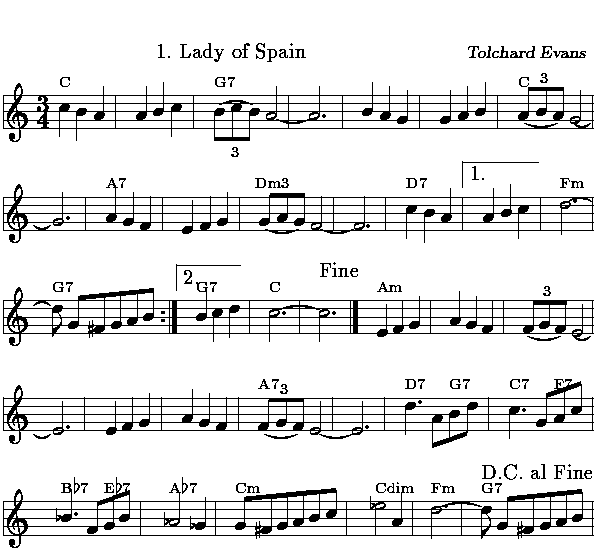
Lady of Spain: The History
As researched by Toby Hanson,
jthanson@halcyon.com
Lady of Spain was written in the 1920s by three English songwriters who
were fed up with English dance bands that played mostly American music.
They took an old Spanish folk form and write a new melody and words for
it. It became popular with big bands, especially Guy Lombardo. It was
written as a quasi-Spanish Fox-Trot. In the 1930s, American accordionists
picked it up and began playing it as their "Spanish" piece. One of the
earliest pictures of Lawrence Welk is him from his George Kelly touring
days in a Spanish costume for Lady of Spain. It really took off when Dick
Contino did the "authoritative" virtuoso version, complete with bellows
shake and sudden modulation from C to Db. He made it famous playing on
the radio in the late 1940s. Specifically, he played the piece on a
talent search-type show and won the $5,000.00 grand prize with it. He also
initially popularized Tico-Tico.
[So it is not strange that the opening track of the anthology of American
accordion music, `Legends of the Accordion' (Rhino, R2 71847)
starts with Lady of Spain by Dick Contino]
Lady of Spain became a true accordion
cliche from weekly national television exposure by Myron Floren. It,
along with Tico Tico and the Clarinet Polka and Carnival of Venice became
accordion standards. Nowadays everybody dreads Lady of Spain because it's
seen as extremely corny. At the Northwest Accordion Society Social Monday
night, I was talking with another player about L. of Spain. He claimed that
the song ruined the accordion and that L. of Spain is the reason that
nobody takes it seriously. I disagree. I love Lady of Spain. A month
ago I did my two-year review (I'm a composition maj. at Cornish College).
I had to perform before the music faculty to decide if I could continue my
degree at Cornish. Rather than write a "serious" piece, I wrote and
performed my World Tour Variations on Lady of Spain where I did the piece
in various styles (Russian, Fr. Musette, Irish, etc.). The faculty loved
it and I was invited to return and finish my degree. Moral: love it or
not, Lady of Spain is here to stay. Ole!
This info and picture originated with Jeroen Nijhof, nijhof@th.rug.nl